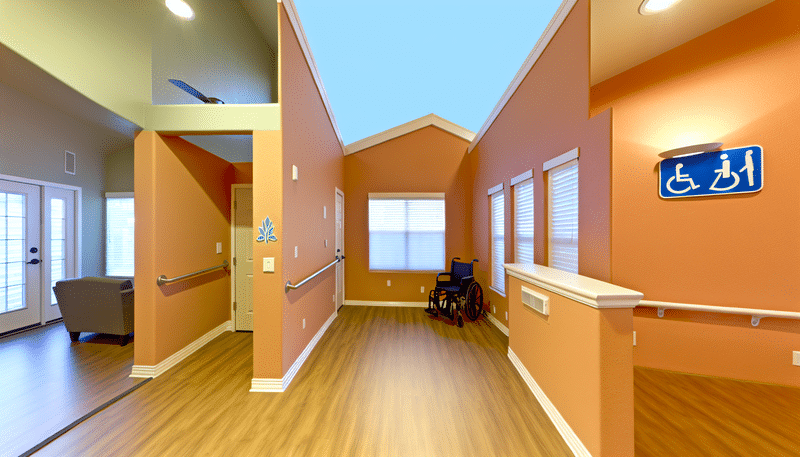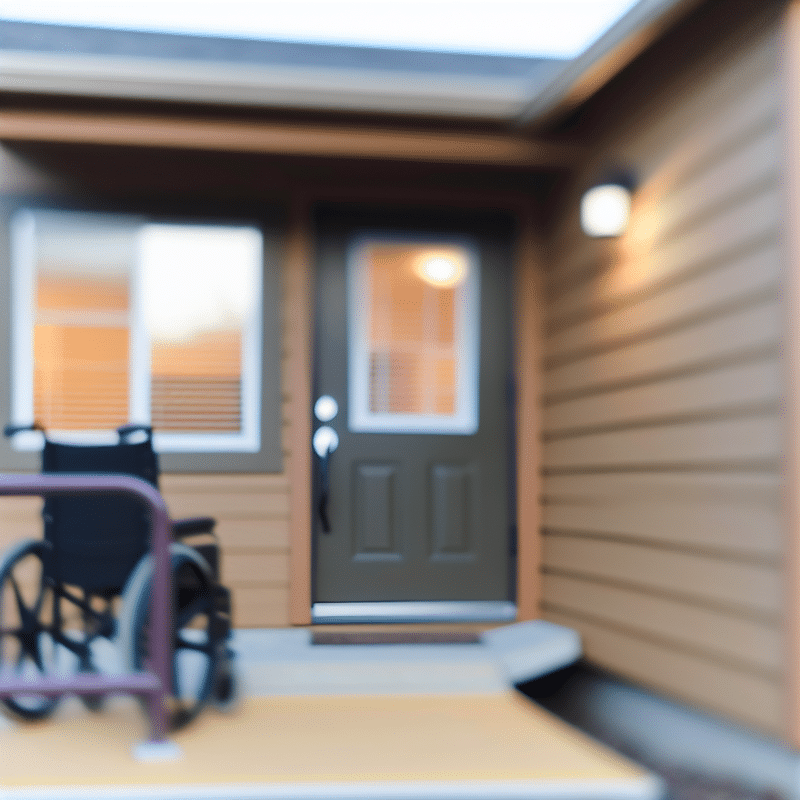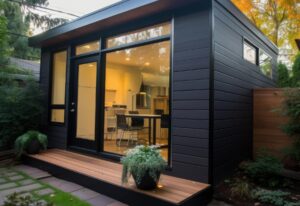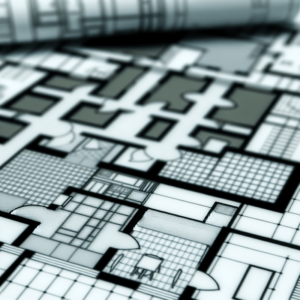Accessory Dwelling Units (ADUs) have become increasingly popular as a solution for additional living space, but it’s crucial to design them with accessibility in mind. An accessible ADU ensures that people with disabilities, seniors, and those with limited mobility can live comfortably and independently. In this article, we’ll explore the key considerations and best practices for designing accessible ADUs.
The Importance of Accessibility in ADU Design
Accessibility is a fundamental aspect of inclusive design. By creating ADUs that cater to the needs of people with disabilities, we promote equal opportunities and improve the quality of life for everyone. The Americans with Disabilities Act (ADA) provides guidelines and regulations for accessible design, ensuring that buildings are safe and usable for all individuals.
Essential Features for Accessible ADUs
When designing an accessible ADU, several key features should be incorporated:
- Door Width and Height: Doors should be wide enough to accommodate wheelchairs and have appropriate height for easy access.
- Ramps and Lifts: If the ADU has level changes, ramps or lifts should be installed to ensure smooth transitions.
- Flooring and Lighting: Non-slip flooring and adequate lighting are essential for safety and navigation.
- Accessible Bathrooms and Kitchens: These spaces should have sufficient clearance, grab bars, and adjustable fixtures to accommodate various needs.
Universal Design Principles in ADU Planning
Universal design is an approach that aims to create spaces that are usable by everyone, regardless of age, size, or ability. When planning an accessible ADU, consider future needs and the concept of aging in place. By incorporating universal design principles, you ensure that the ADU can adapt to changing requirements over time.
Space Management in Small but Accessible ADUs
One of the challenges in designing accessible ADUs is managing space efficiently. Strategies such as open floor plans, multi-functional furniture, and smart storage solutions can help maximize space while maintaining accessibility.
Accessible ADU Design Case Studies
Let’s take a look at some real-life examples of accessible ADUs:
Accessible ADU in Palo Alto
In Palo Alto, California, an accessible ADU was designed to accommodate the needs of an elderly parent. The unit features wide doorways, a roll-in shower, and a wheelchair-friendly kitchen layout. By incorporating these elements, the ADU provides a safe and comfortable living space for the parent while allowing them to maintain independence.
ADUs Catering to Accessibility in Orange County
Orange County, known for its vibrant neighborhoods like Irvine and Santa Ana, has seen an increase in accessible ADU construction. Local builders are incorporating features such as ramps, grab bars, and accessible appliances to meet the growing demand for inclusive living spaces.
| Accessible ADU Feature | Importance |
|---|---|
| Wide Doorways | Allows easy passage for wheelchairs and mobility devices |
| Grab Bars | Provides support and stability in bathrooms and other areas |
| Roll-In Showers | Eliminates the need for stepping over a threshold |
| Adjustable Fixtures | Accommodates different heights and reach capabilities |
Best Practices for Designing ADA-Compliant ADUs
When designing an ADA-compliant ADU, it’s essential to follow best practices and collaborate with accessibility specialists. Here are some professional tips:
- Consult with an experienced ADU designer who understands accessibility requirements.
- Ensure that the ADU meets local zoning laws and building codes specific to accessibility.
- Use durable and low-maintenance materials that are suitable for individuals with disabilities.
- Incorporate technology and smart home features to enhance accessibility and convenience.
Hiring Professionals for Accessible ADU Design
Designing an accessible ADU requires expertise and knowledge of accessibility standards. When choosing a contractor for your ADU project, look for professionals who have experience in accessible design and are familiar with local regulations. They should be able to guide you through the process, from initial planning to final construction, ensuring that your ADU meets all accessibility requirements.
Frequently Asked Questions
Here are some common questions related to designing accessible ADUs:
- What is the cost of building an accessible ADU?
The cost of building an accessible ADU varies depending on factors such as size, location, and specific accessibility features. On average, accessible ADUs can cost between $100,000 to $200,000. - How long does it take to build an accessible ADU?
The timeline for building an accessible ADU typically ranges from 4 to 8 months, depending on the complexity of the project and any necessary permits and approvals. - Are there grants or financial assistance available for building accessible ADUs?
Some local governments and organizations offer grants or financial assistance programs for building accessible ADUs. It’s worth researching and contacting your local housing department or disability services office for more information.
Further Resources for Accessible ADU Design
If you’re interested in learning more about accessible ADU design, here are some helpful resources:
- American Institute of Architects (AIA): Offers guidelines and best practices for accessible design.
- National Association of Home Builders (NAHB): Provides resources and education on accessible home design.
- Universal Design Council: Promotes the principles of universal design and offers resources for accessible living spaces.
In Orange County and Los Angeles, there are local organizations and contractors specializing in accessible ADU design. Reach out to them for personalized guidance and support in creating your inclusive living space.
Designing an accessible ADU is an investment in creating a home that welcomes and accommodates everyone. By prioritizing accessibility and incorporating universal design principles, you ensure that your ADU is a safe, comfortable, and inclusive space for all.







